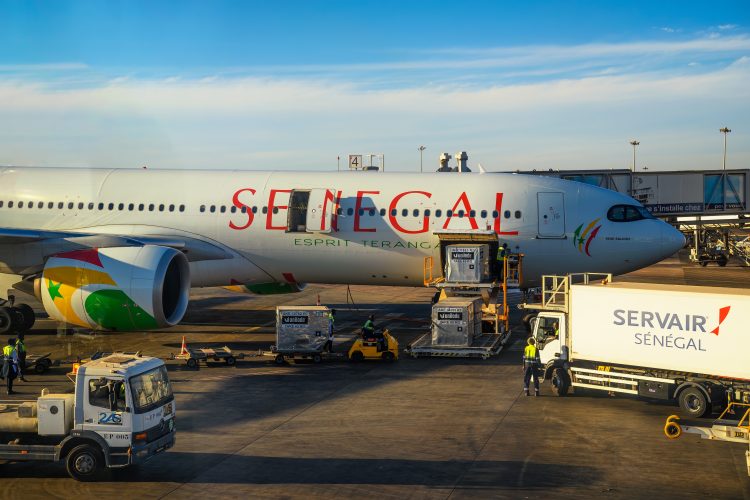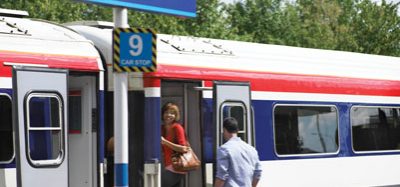Positioning Blaise Diagne International Airport as a trade and connectivity hub
Posted: 28 July 2025 | David McMullen | No comments yet
Blaise Diagne International Airport will expand cargo capacity and routes, positioning itself as a regional logistics and aviation hub by 2035, CEO, Askin Demir, tells International Airport Review.


Outside DSS Terminal
New freight terminal and logistics hub development
Senegal’s Blaise Diagne International Airport (DSS) has unveiled ambitious plans to construct a freight terminal capable of handling up to 80,000 tonnes of cargo annually. Scheduled to begin construction in 2026 and operational by 2028, this initiative signals a major upgrade in the airport’s infrastructure, essential to consolidating DSS’s role as a major West African logistics hub.
Airport CEO Askin Demir asserted that the project develops from the strategic improvements in Senegal’s road networks and port expansion:
“With the new investment in Senegal on the highways, it’ll be much more interesting for the neighbouring countries like Mali, Gambia, and Guinea.” He noted that DP World’s development of a new deep‑water port at Ndayane, near Dakar, reinforces DSS’s importance in the region for connectivity.
A core aspect of the new freight terminal design is the specialised infrastructure for perishable and pharmaceutical goods. Demir outlined that the facility would support “perishable goods handling and probably also pharmaceutical handling, that will be connected to Dakar Seaport as a hub, for South America, America, and also for the African markets.”
The freight terminal forms part of Senegal’s wider Aviation Hub vision under the national “Vision 2050” and recent public-private partnership (PPP) initiatives. Alongside PPPs and sukuk (Islamic financing), this plan includes the construction of eight regional airports and a feeder airline, Air Senegal Express. In March 2024, AIBD secured some €300 million in financing to scale passenger capacity by 40% and fund the cargo terminal.
Single African Air Transport Market (SAATM) and connectivity challenges
“The implementation of the Single African Air Transport Market (SAATM) could significantly benefit airports like AIBD,” Demir explained. “It would only require the creation of new regulations to help airlines expand their market share and, crucially, reduce ticket prices. Based on our calculations, it could result in a passenger increase of nearly 30%, just for our airport alone.”
However, he cautioned that achieving SAATM’s full potential would not be without its challenges. “Connectivity in Africa remains a major issue, and frankly, I’m not convinced the Single African Aviation Market will fully work as intended. For me, Africa is best understood in four distinct regions; north, east, south and west, and each faces its own barriers to integration.”
He noted that some regions are already making progress. “Southern Africa has started implementing something close to a unified market, and Western Africa is heading in a similar direction. Airlines like Air Côte d’Ivoire and Royal Air Maroc are strong players already operating across borders.”
By improving African connectivity and reducing bureaucratic obstacles, SAATM could indeed boost both passenger and cargo volumes. For DSS, that represents an opportunity not only for aviation growth, but for expanded cargo operations, especially with the development of the new terminal.
Sustaining investment momentum amid economic volatility and securing finalisation for SAATM integration remain critical.
Route development and airline expansion
Post‑COVID, DSS grew from just two destinations in France to eight, serviced by Air Senegal, which now flies from various French cities. Looking ahead, discussions are underway with United Airlines for a Washington D.C. route, and Air Canada is preparing to launch its first service to Dakar. Talks with low‑cost European carriers are also in progress.


Air Senegal
Strategically, West African airports such as DSS benefit from direct North American routes to attract business and diaspora traffic, while low-cost links boost tourism and trade.
DSS also benefits from integration with regional surface transport. The Train Express Régional (TER) line, Senegal’s modern airport rail link, connects DSS with Diamniadio and Dakar. Phase II, extending service directly to the airport, is expected in the second half of 2025. This enhances airport accessibility and reinforces it as a logistics node.
Improving freight capacity could double DSS’s handling capability and increase operational efficiency. As logistics stakeholders have long voiced concerns over high costs and slow throughput, the new terminal aims to tackle these challenges. The airport structurally handled 39,922 tonnes in 2024, well under capacity. Matching this with new infrastructure will drive growth and attract new operators.
DSS’s approach reflects forward-thinking infrastructure development. Once completed by 2028, the new 80,000‑tonne cargo terminal will put DSS at the centre of regional supply chains. It leverages land, air and sea links, the TER rail line, the new DP World port, for a seamless multi-modal network. Complementary air services, from France, North America and low-cost Europe, further cement DSS’s position as a gateway for passengers and goods.
If coupled with progress on SAATM and continental air liberalisation, DSS could realise its ambition: to be West Africa’s leading passenger and freight hub by 2035.
About the interviewee


After studying at Istanbul Technical University, Askin Demir began his career as an airport agent, where he held various aeronautical-oriented positions. To date, Askin has to his credit the establishment of eight airport operations in five countries across three continents, Africa, Europe, Asia. In 2018, he took over the General Management of 2AS (AIBD – Assistance – Services), a ground handling company. In 2021 Askin became the Managing Director of LAS, the managing company of Blaise International Diagne Airport in Dakar, a flagship of aeronautics at regional and sub‑regional level. An international class airport holding several certificates.
Are you ready to meet the expectations of Gen Z travellers? Join our virtual panel to discover how airports can engage the next generation of passengers.
16 Oct 2025 | 14:00 PM BST | FREE Virtual Panel Discussion
Join us for this interactive session where industry leaders will explore how airports are adapting to the needs and values of Gen Z, the first truly digital-native, socially conscious, and tech-savvy generation.
What You’ll Learn:
- What drives Gen Z travel decisions, and how to respond
- How to harness digital tools, social media, and mobile-first strategies
- How sustainability, inclusivity, and personalised experiences shape Gen Z’s airport expectations
- Real-world examples from leading airports that are successfully engaging younger travellers
Don’t miss your chance to learn from the airports leading this change – Register Now – It’s Free!
Related topics
Air freight and cargo, Airlines, Airport construction and design, Airport development, Funding and finance, Operational efficiency, Passenger volumes, Regulation and Legislation, Route development, Sustainability


















